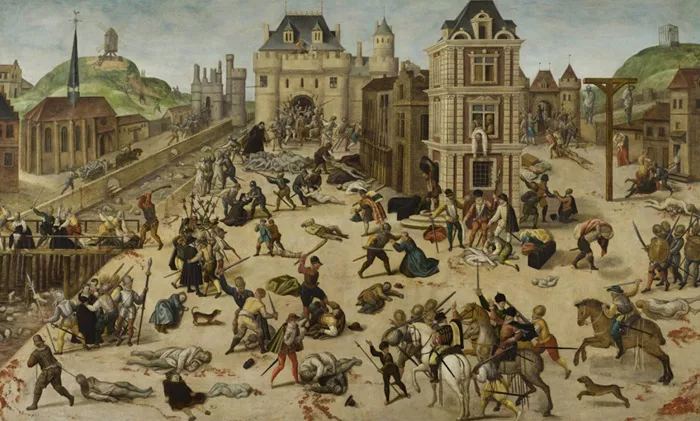May 6 holds significance in Canadian history, marking events that have shaped the nation’s cultural, political, and social landscape. This article chronicles notable occurrences on this date, providing detailed insights into each event.
What Happened on May 6 in Canadian History?
1776: The Continental Army’s Withdrawal from Quebec
On May 6, 1776, during the American Revolutionary War, the Continental Army, weakened by disease and facing a superior enemy, withdrew from Quebec City. The British forces, under the command of Governor Guy Carleton, had successfully withstood the American siege until the arrival of a British fleet on this date. Carleton’s leadership during the defense earned him a knighthood. This retreat marked the end of the American invasion of Quebec, solidifying British control over the region and influencing the future geopolitical landscape of North America.
1814: The British Assault on Fort Oswego
On May 6, 1814, during the War of 1812, British forces led by Lieutenant General Sir Gordon Drummond launched an attack on Fort Oswego, located on the southeastern shore of Lake Ontario. The fort was a strategic point for the Americans, serving as a supply depot and shipbuilding site. The British assault resulted in the capture and burning of the fort, disrupting American supply lines and demonstrating British naval dominance on the Great Lakes. This victory had significant implications for control over the region during the war.
1840: Introduction of Postage Stamps in Canada
May 6, 1840, marked the introduction of postage stamps in Canada, revolutionizing the country’s postal system. Prior to this innovation, postage rates were often inconsistent, and recipients typically bore the cost of mail delivery. The adoption of prepaid postage stamps streamlined mail services, reduced costs, and increased accessibility for the general public. This development mirrored similar postal reforms in other countries and played a crucial role in enhancing communication across Canada’s vast territories.
1910: Death of King Edward VII and Accession of King George V
On May 6, 1910, King Edward VII, the reigning monarch of Canada and the British Empire, passed away. His death marked the end of the Edwardian era, a period noted for significant social and political changes. Edward VII was succeeded by his son, King George V, who would lead the empire through pivotal events, including World War I. The transition of power had profound implications for Canada, reinforcing its ties to the British monarchy and influencing its role within the Commonwealth.
1919: Prelude to the Winnipeg General Strike
In May 1919, tensions between workers and employers in Winnipeg escalated, leading to the Winnipeg General Strike, one of the most significant labor actions in Canadian history. While the strike officially began on May 15, the events leading up to it, including organizing efforts and growing unrest, were in full swing by May 6. Workers from various industries demanded better wages, improved working conditions, and the right to collective bargaining. The strike would eventually involve over 30,000 workers and have lasting effects on labor relations in Canada.
1956: Toronto Marlboros Win the Memorial Cup
On May 6, 1956, the Toronto Marlboros, a junior ice hockey team in the Ontario Hockey Association, secured their third Memorial Cup championship. They defeated the Regina Pats of the Saskatchewan Junior Hockey League in a series held at Maple Leaf Gardens in Toronto. This victory highlighted the Marlboros’ dominance in junior hockey and contributed to the development of future NHL stars, reinforcing Toronto’s reputation as a hockey powerhouse.
2009: Canada Begins Negotiations with the European Union
On May 6, 2009, Canada initiated negotiations with the European Union on the Comprehensive Economic and Trade Agreement (CETA). This marked the beginning of efforts to establish a comprehensive trade agreement aimed at enhancing economic cooperation, reducing trade barriers, and fostering investment between Canada and EU member states. The negotiations would span several years, eventually leading to a landmark agreement that significantly impacted Canada’s international trade policies.
2023: Canadian Commemorations for the Coronation of King Charles III
On May 6, 2023, Canada held a televised national ceremony in Ottawa to mark the coronation of King Charles III. The event featured speeches, performances, and the unveiling of new heraldic symbols, including a standard for the monarch and a heraldic crown incorporating distinctly Canadian elements. Landmarks across the country were illuminated in emerald green, and various initiatives were announced, such as a donation to the Nature Conservancy of Canada. These commemorations underscored Canada’s enduring connection to the monarchy and its role within the Commonwealth.
Conclusion
May 6 serves as a reflection of Canada’s multifaceted history, encompassing military engagements, political transitions, cultural achievements, and economic developments. Each event on this date contributes to the rich tapestry of the nation’s past, offering insights into the forces that have shaped Canada’s identity and evolution.
Related Topics:

